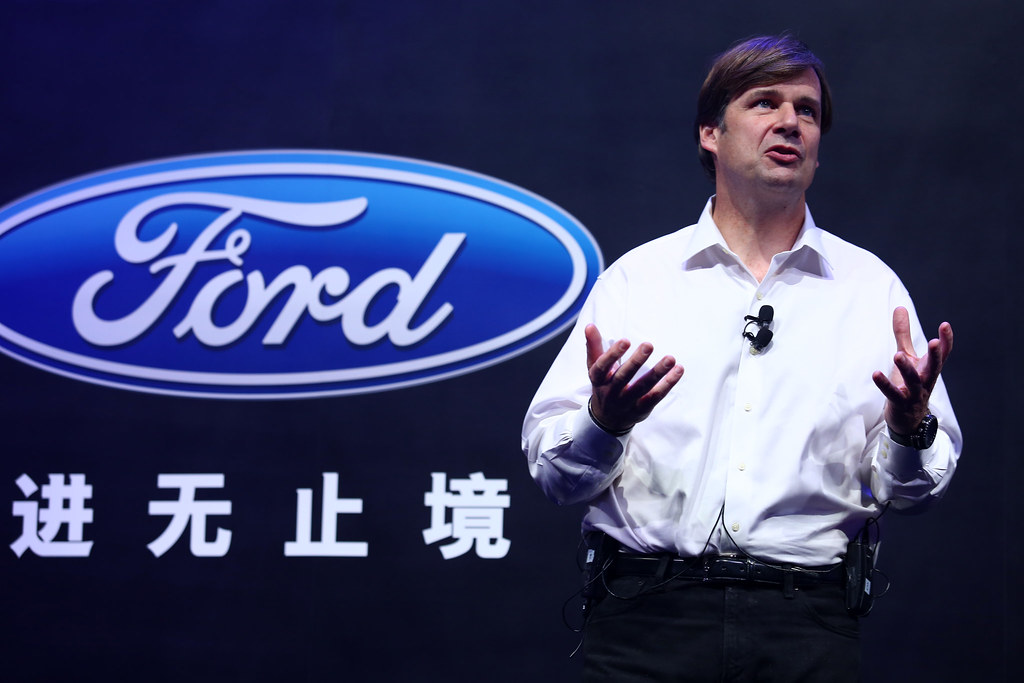Ford CEO Identifies Chinese Automakers as Biggest Rivals in the EV Market

May 29, 2023
During the Morgan Stanley Sustainable Finance Summit, Ford CEO Jim Farley made a noteworthy statement. He pointed out that Chinese automakers are the Blue Oval’s main rivals in the electric vehicle (EV) market.
In his view, these Chinese automakers have the potential to become a dominant force, surpassing established players such as GM and Toyota. This article delves into Farley’s perspective, examines the rise of Chinese automakers, explores Ford’s strategies to overcome the competition, and discusses the financial implications of their EV division.
The Emergence of Chinese Automakers
Farley’s assertion underscores the increasing influence of Chinese automakers in the global EV sector. Companies like BYD, Geely, Great Wall, Changan, and SAIC have emerged as winners in the race, leveraging their scale advantage and expanding their reach beyond China.
They have successfully entered the European market, benefiting from favorable policies and achieving high sales volumes. As a result, Ford sees Chinese automakers as formidable competitors, surpassing the traditional rivals.
Distinctive Branding and Cost Competitiveness
To retain a competitive edge, Ford recognizes the significance of both distinctive branding and cost competitiveness. While Farley believes that Ford already possesses a unique brand identity, the company acknowledges the need to lower costs to effectively compete with Chinese automakers. Achieving cost parity is crucial for Ford’s success in the EV market.
To this end, the company plans to build a $3.5 billion EV battery plant in Michigan, utilizing advanced CATL technology. However, this initiative has encountered political resistance due to concerns about potential ties with the Chinese Communist Party. Farley emphasizes the importance of avoiding political obstacles that may hinder localization efforts and negatively impact consumers.
Financial Performance and Market Outlook
In the first quarter of the year, Ford’s Model e EV division reported a loss of $722 million, and the company expects further losses of up to $3 billion by the end of the year. However, Ford’s overall financial performance presents a more positive picture.
The company achieved a net income of $1.8 billion, primarily driven by its Ford Blue gasoline-powered business, which earned a profit of $2.6 billion. Additionally, the Ford Pro commercial vehicle unit generated $1.36 billion in Q1 2023.
These figures highlight the challenges Ford faces in the EV market, but also underscore the continued strength of their traditional vehicle segments.
Conclusion
Jim Farley’s recognition of Chinese automakers as the primary rivals in the EV market underscores the shifting dynamics of the industry. While traditional competitors like GM and Toyota have yet to fully establish their presence in the EV segment, Chinese automakers have seized opportunities and gained a significant market share, particularly in Europe.
Ford CEO acknowledges the importance of distinctive branding and cost competitiveness to effectively compete. However, potential political challenges regarding battery technology localization could hinder Ford’s progress. As the EV market continues to evolve rapidly, Ford and other automakers face the ongoing challenge of balancing financial performance and innovation to capture a larger market share in the growing EV segment.
By leveraging their distinctive brand and driving down costs, Ford aims to carve out a prominent space in the EV market, ultimately benefiting consumers and advancing the global transition to electric mobility.









